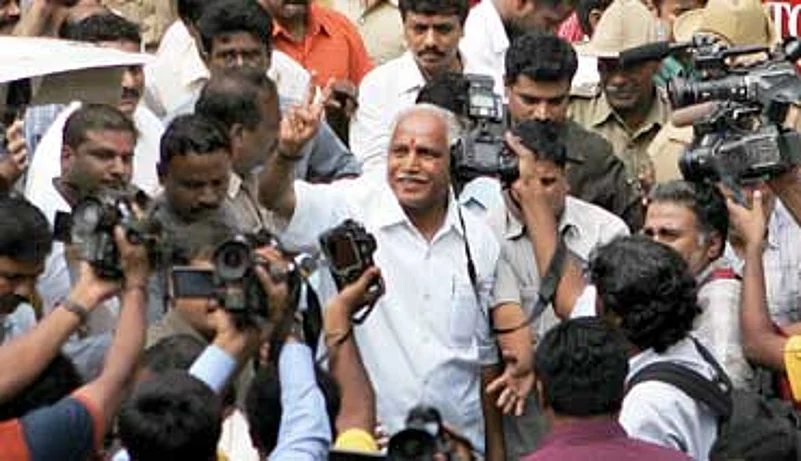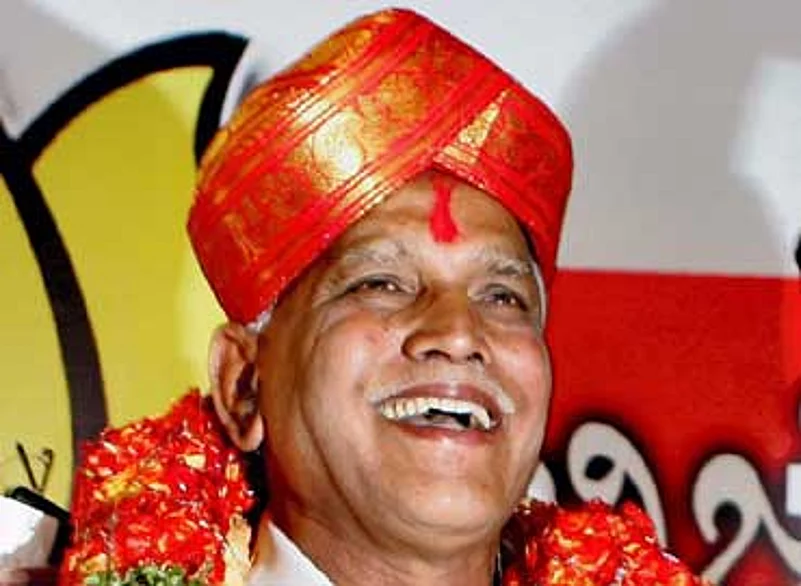It has been a decisive victory for the BJP inKarnataka. It has become the single largest party with 110 seats and has alsocornered a vote share of 33.8 per cent, up 5.3 per cent from 2004. But even as a toast is being raised for the BJP, the revelers need tobe reminded that the party is three seats short of a simple majority.
It is largely being suggested that out of the six independent candidates whohave won, getting three to support the BJP is not going to be a problem, but,for the record, out of the six independents who have won, four are Congressrebels (Kolar, Malavalli, Pavagada, Hiriyur), one JD(S) rebel (Hosadurga) andone BJP rebel (Kalghatgi). What means and method the BJP will employ to woo anyof the three will be a curious thing to watch in the run up togovernment-formation. In recent electoral history wafer thin margins of one ortwo seats has played havoc in the Goa, Jharkand, and Meghalagya. So, the majorquestion is: how stable will the BJP government be? Stability was one of theimportant planks on which this election was fought.
Advertisement
Let's keep aside the issue of government-formation andask why and how the BJP managed to increase its numbers from 79 in 2004 to 110.This has become possible for the simple reason that the BJP has borrowed thetraditional Congress formula and has become 'mainstream' in a number of ways.That is, it has found appeal not just among voters of one community, one sectionor one region, but has penetrated across the state. Besides the urban voters ofBangalore giving them 17 out of the 28 seats, the rural voters too havepreferred them across the state. The Dalit and tribal votes too have majorlyswung their way. In the earlier elections the BJP had struggled to put upwinnable candidates across the state, but this time around the party's depth hasrelatively improved, but still falls short of the Congress, which too, by the way, has improved its performance over the last elections in terms of seats, but its vote share has shrunk by 0.8 per cent, although higher than BJP at 34.5 per cent.
Advertisement
The BJP's 'relative' improvement in demographic and social depth has to bestressed because South Karnataka or the Old Mysore region, where the polls wereheld during the first phase, still continues to be a Congress and JD(S)stronghold. In districts like Mandya, Ramanagara, Hassan, Chikkaballapur, andChamarajanagar the BJP has failed to open its account. In an important districtlike Mysore, it has barely managed two of the eleven seats. But in CentralKarnataka and Malnad districts, like Davangere, Chitradurga, Shimoga andChikmagalur they have either held on to what they gained last time or haveimproved their fortunes.
But the most interesting piece of news for all the'secularists' is that the BJP has slipped in the coastal belt, which wasconsidered to be a Hindutva bastion. It was this region that had witnessedcommunal riots in 2006 and was feared to become the 'Gujarat of the South.' Itwas also seen as a virtual gateway for the BJP to enter the South. In DakshinKannada, BJP and Congress are neck-to-neck with four seats each. In UttaraKannada the BJP, Congress and JD(S) have shared two seats each and in Udupi, theKarkala seat has gone to the Congress. A Hindutva mascot in the region, NagarajShetty, has lost his seat (Bantwal) to veteran Congressman Ramanath Rai. Giventhe fact that most central leaders of the Congress come from this region(Margaret Alva, Janardhan Poojary, B K Hariprasad, Veerappa Moily, OscarFernandes), this development should offer them some relief. To the BJP's creditit did not run a virulent Hindutva campaign. They neither raked up theBababudangiri issue nor the Hubli Idgah Maidan issue, but at the same time didnot give even a single ticket to a person from any minority community. Andsurprise of surprises was that Narendra Modi made most visits to this region anddrew only moderate crowds.
Besides, the BJP's expansion of its appeal and social base, their synchronisedcampaign, superior strategy and a well-crafted manifesto is to also be countedfor their performance. Their talk of free-power and expanding the BPL card baseappears to have touched the rural voter in inflationary times. Congress tooproposed a number of popular schemes, but its communication apparatus failedpathetically. If one senior leader spoke of lifting the arrack ban, anothercountered it by saying that it was not the party's official view. The perceptionin the state is that the BJP's victory is well-earned and well-deserved, whileCongress' 80 seats are seen as achieved more by default than by design.


Even as the BJP savours its victory, the big question already being asked inBangalore is will the Congress and the JD(S) stick together to fight theparliament polls or will the Congress quietly hope for the disintegration of theJD(S) hoping to consolidate the secular vote in the future?




















